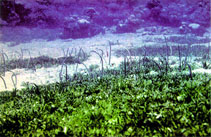http://www.fishbase.org/Summary/speciesSummary.php?genusname=Gorgasia&speciesname=sillneri ---> http://192.134.151.83/Summary/speciesSummary.php?genusname=Gorgasia&speciesname=sillneri
http://192.134.151.83/Summary/speciesSummary.php?genusname=Gorgasia&speciesname=sillneri ---> https://fishbase.mnhn.fr/Summary/speciesSummary.php?genusname=Gorgasia&speciesname=sillneri
https://fishbase.mnhn.fr/Summary/speciesSummary.php?genusname=Gorgasia&speciesname=sillneri ---> https://fishbase.mnhn.fr/summary/Gorgasia-sillneri.html
Gorgasia sillneri

You can
sponsor
this page
Common name (e.g. trout)
Genus + Species (e.g. Gadus morhua)
-

-
About this page
-
Languages
-
User feedbacks
-
Citation
-
Uploads
-
Related species
-


 Add your observation in
Fish Watcher
Upload your
photos
and
videos
Add your observation in
Fish Watcher
Upload your
photos
and
videos
Pictures
|
Google image
 Gorgasia sillneri
Gorgasia sillneri
Picture by
Khalaf, M.A.
Teleostei (teleosts) >
Anguilliformes
(Eels and morays) >
Congridae
(Conger and garden eels) > Heterocongrinae
Etymology:
Gorgasia:
From Greek mithology, Gorgas, -ados = the Gorgone´s head (Ref.
45335
)
.
Environment: milieu / climate zone / depth range / distribution range
Ecology
Marine; demersal. Tropical
Western Indian Ocean: Gulf of Aqaba, Red Sea.
Size / Weight / Age
Maturity: L
m
?
range ? - ? cm
Max length : 83.8 cm TL male/unsexed; (Ref.
33408
)
Life cycle and mating behavior
Maturity
|
Reproduction
|
Spawning
|
Eggs
|
Fecundity
|
Larvae
Spawning begins early in the morning. From variable colonies in a reef, each eel occupies a burrow it has dug, reaching into the water column to pick out the plankton for food. Prior to spawning, the male and female move their burrows close together; whether the male or the female moves is not known. The male then defends the female from other males, and prolonged and vigorous inter-male combat is common. On the day of spawning, the male extends out of his burrow toward the female. Both spread their dorsdal fins broadly and the male rubs his head over the female's body. If not ready, the female withdraws into her burrow; if ready, she extends toward the male and wraps her body once or twice around his, bringing her urogenital opening close to his. The pair remains in this position until spawning occurs, which may take up to nine hours or more.
Castle, P.H.J. and J.E. Randall
, 1999. Revision of Indo-Pacific garden eels (Congridae: Heterocongrinae), with descriptions of five new species. Indo-Pac. Fish. (30):52 p. (Ref.
33408
)
IUCN Red List Status (Ref.
130435
)
Data deficient (DD)
; Date assessed:
26 November 2016
CITES
Not Evaluated
Not Evaluated
Threat to humans
Harmless
Human uses
FAO - Publication:
search
|
FishSource
|
More information
Countries
FAO areas
Ecosystems
Occurrences
Introductions
Stocks
Ecology
Diet
Food items
Food consumption
Ration
Common names
Synonyms
Metabolism
Predators
Ecotoxicology
Reproduction
Maturity
Spawning
Spawning aggregation
Fecundity
Eggs
Egg development
Age/Size
Growth
Length-weight
Length-length
Length-frequencies
Morphometrics
Morphology
Larvae
Larval dynamics
Recruitment
Abundance
BRUVS
References
Aquaculture
Aquaculture profile
Strains
Genetics
Electrophoreses
Heritability
Diseases
Processing
Nutrients
Mass conversion
Collaborators
Pictures
Stamps, Coins Misc.
Sounds
Ciguatera
Speed
Swim. type
Gill area
Otoliths
Brains
Vision
Tools
E-book
|
Field guide
|
Identification keys
|
Length-frequency wizard
|
Life-history tool
|
Point map
|
Classification Tree
|
Catch-MSY
|
Special reports
Check for Aquarium maintenance
|
Check for Species Fact Sheets
|
Check for Aquaculture Fact Sheets
Download XML
Summary page
|
Point data
|
Common names
|
Photos
Internet sources
AFORO (otoliths) |
Aquatic Commons
|
BHL
|
Cloffa
|
BOLDSystems
|
Websites from users
|
Check FishWatcher
|
CISTI
|
Catalog of Fishes
:
genus
,
species
|
DiscoverLife
|
ECOTOX
| FAO - Publication:
search
|
Faunafri
| Fishipedia |
Fishtrace
| GenBank:
genome
,
nucleotide
| GloBI |
Google Books
|
Google Scholar
|
Google
| IGFA World Record |
MitoFish
|
Otolith Atlas of Taiwan Fishes
|
PubMed
| Reef Life Survey | Socotra Atlas |
Tree of Life
| Wikipedia:
Go
,
Search
| World Records Freshwater Fishing |
Zoobank
|
Zoological Record
Estimates based on models
Preferred temperature (Ref.
123201
): 25 - 27.4, mean 26.7 °C (based on 34 cells).
Phylogenetic diversity index (Ref.
82804
): PD
50
= 0.5001 [Uniqueness, from 0.5 = low to 2.0 = high].
Bayesian length-weight: a=0.00102 (0.00046 - 0.00225), b=3.06 (2.88 - 3.24), in cm total length, based on all LWR estimates for this body shape (Ref.
93245
).
Trophic level (Ref.
69278
): 3.4 ±0.4 se; based on size and trophs of closest relatives
Resilience (Ref.
120179
): Medium, minimum population doubling time 1.4 - 4.4 years (Preliminary K or Fecundity.).
Fishing Vulnerability (Ref.
59153
): Moderate to high vulnerability (54 of 100).
Back to Search
Random Species
Back to Top
Accessed through:
Not available
FishBase mirror site :
localhost
Page last modified by :
mrius-barile
- 20 July 2016
Fatal error
: Uncaught ArgumentCountError: Too few arguments to function checkEcotox(), 1 passed in /var/www/html/summary/speciessummary.php on line 2304 and exactly 3 expected in /var/www/html/includes/speciessummary.lib.php:2579 Stack trace: #0 /var/www/html/summary/speciessummary.php(2304): checkEcotox() #1 {main} thrown in
/var/www/html/includes/speciessummary.lib.php
on line
2579
|